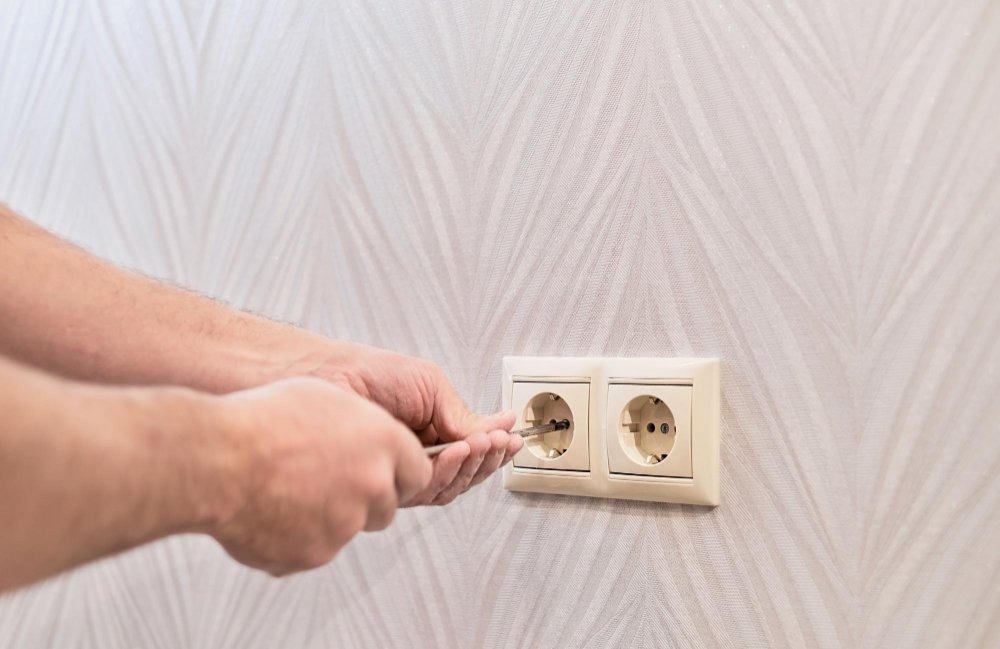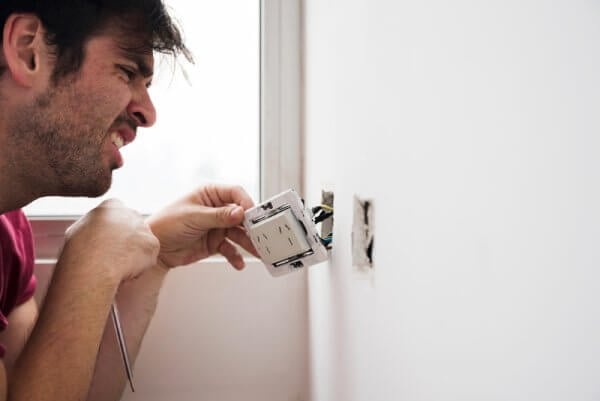
The height of a socket by the sink and in other parts of the bathroom has long been of great interest. It’s important to remember that the correct placement of sockets in a bathroom involves not just aesthetics but also safety and functionality. When deciding where to place sockets, building regulations, safety standards, and user convenience must be considered. Appropriate height and placement of sockets impact the comfort of using electrical devices, such as dryers, shavers, or electric toothbrushes. If you don't have time to delve into this topic by going through numerous guides, check out ours below! We have gathered the most important information in one place just for you, ensuring your bathroom will be perfectly suited to your needs.
What will you learn from this article?
- What should the height of a socket by the sink in the bathroom be?
- What are the safest places in the bathroom for installing sockets?
- How to plan the optimal placement of sockets to make the space stylish and functional?
- What regulations apply to installing sockets in damp rooms?
Height of a Socket by the Sink and More – Basic Principles
One of the key elements when planning bathroom sockets is choosing the appropriate height for their installation. This is not only about aesthetics but above all about safety. There are specific rules in the bathroom due to building regulations aimed at protecting against hazards resulting from water contacting electricity, which flows through electrical sockets—essential elements in a bathroom. Remember that the recommended installation height of sockets is:
- 50-150 cm above floor level – this is the minimum socket height that provides convenient access to electrical sockets while minimizing the risk of water contact,
- distance from the water source – minimum 60 cm – according to regulations, electrical sockets must be installed at least 60 cm away from the wet zone,
- electrical sockets by the sink – minimum 30 cm from the edge – to avoid direct contact with water while washing hands.
Remember that the recommended height of sockets in the bathroom may vary depending on the function of the bathroom itself. In a children's bathroom, sockets should be installed higher to prevent unsafe use by the youngest, considering they often like to reach where they shouldn’t.
Where to Place Sockets in the Bathroom to Maintain Appropriate Distance?
The placement of sockets in the bathroom requires careful planning. To make the space functional and safe, and have easy access to electrical appliances, avoid installing sockets in areas exposed to direct water contact, such as inside a shower cabin, over a bathtub, or near an open shower. Doing otherwise could expose you and your loved ones to significant danger—up to and including loss of health or life.
Best Places for Sockets in the Bathroom:
- by the sink – away from direct water contact, but at a convenient distance for connecting a dryer or shaver,
- next to bathroom cabinets – sockets in the bathroom can be hidden in cabinets, allowing for discreet installation and easy connection of, for example, an electric toothbrush,
- by the mirror – an ideal place to install sockets if you often use specific electrical appliances for hair styling—of course, with a hair dryer being a top choice.
A stylish bathroom space can also be practical—just plan the placement of sockets so they aren’t visible, yet easily accessible. A great solution is using sockets built into bathroom furniture, like under-sink cabinets.

Protection Zones in the Bathroom – Don't Forget Them When Installing Electrical Sockets
The installation of electrical sockets is a process where considering the so-called protection zones is crucial. These zones are designed to protect users from electric shock in the moist environment of a bathroom.
- zone 0 – inside the bathtub or shower cabin. No electrical sockets or powered devices can be installed in this zone to ensure the safety of you and your loved ones.
- zone 1 – directly above the bathtub or shower. Sockets cannot be installed in this zone either, but devices with the appropriate waterproof class can be placed here,
- zone 2 – 60 cm away from the bathtub or shower. Here, sockets can be installed in the bathroom if they have adequate moisture protection (e.g., IP44),
- zone 3 – beyond direct water contact range (over 60 cm from the wet zone). In this zone, standard sockets can be installed to ensure the desired level of safety for your family.
How to Plan a Stylish Space with Sockets in the Bathroom?
Aesthetic placement of sockets is key to a stylish bathroom. Modern sockets in the bathroom can become a decorative element, especially if you choose designer models with a minimalist finish. When planning your bathroom arrangement take into account a few aspects that will help you achieve the expected results more easily:
- Matching power sources of electrical appliances to the bathroom colour scheme – by choosing sockets in the colour of the walls or tiles, you can subtly integrate them into the space.
- Hidden sockets in the bathroom – in modern bathrooms, sockets are often concealed in furniture or under countertops, making them less visible.
- Sockets in the bathroom with a protective flap – not only increase safety but can also serve a decorative function, especially in retro-style bathrooms.
Good electrical socket placement allows for maintaining harmony and stylistic consistency of the entire bathroom. Among other reasons, it's worth ensuring that sockets are in the most suitable places. Otherwise, their use might be not only cumbersome but also poses a risk to health or even life.
How to Minimize the Risk of Electric Shock When Using Electrical Appliances?
When planning socket placement in the bathroom, it’s worth following a few simple principles that can significantly minimize the risk of electric shock for both adults and children:
- install bathroom sockets in easily accessible places, but away from direct water contact,
- use sockets with moisture protection (IP44 or higher),
- consider the aesthetic of sockets—choose models that match the bathroom style.
Electrical Sockets – Summary
In summary, the proper placement and height of bathroom sockets are key to functionality and safety. Remember to adhere to recommended distances from water sources, install bathroom sockets at the appropriate height, and apply required safety standards. This will ensure the bathroom is not only aesthetically pleasing but also safe and comfortable for daily use to maintain personal appearance and hygiene.
Before proceeding with the next stages of work, remember the minimum distance a socket should be from the sink, floor, or water source such as a shower. Sockets should be easily accessible to adult users while adequately “hidden” from the youngest to reduce the risk of electric shock in the bathroom. Installing a socket in the bathroom doesn’t pose much of a problem for people who enjoy this kind of work and have the necessary experience to carry it out.
And if you want to learn more about making daily bathroom use comfortable and as safe as possible, check out our other guides, including the one detailing how to connect water to the WC frame. More guides will come over time, so we encourage you to regularly visit the blog we run for all home DIY enthusiasts and more.


















